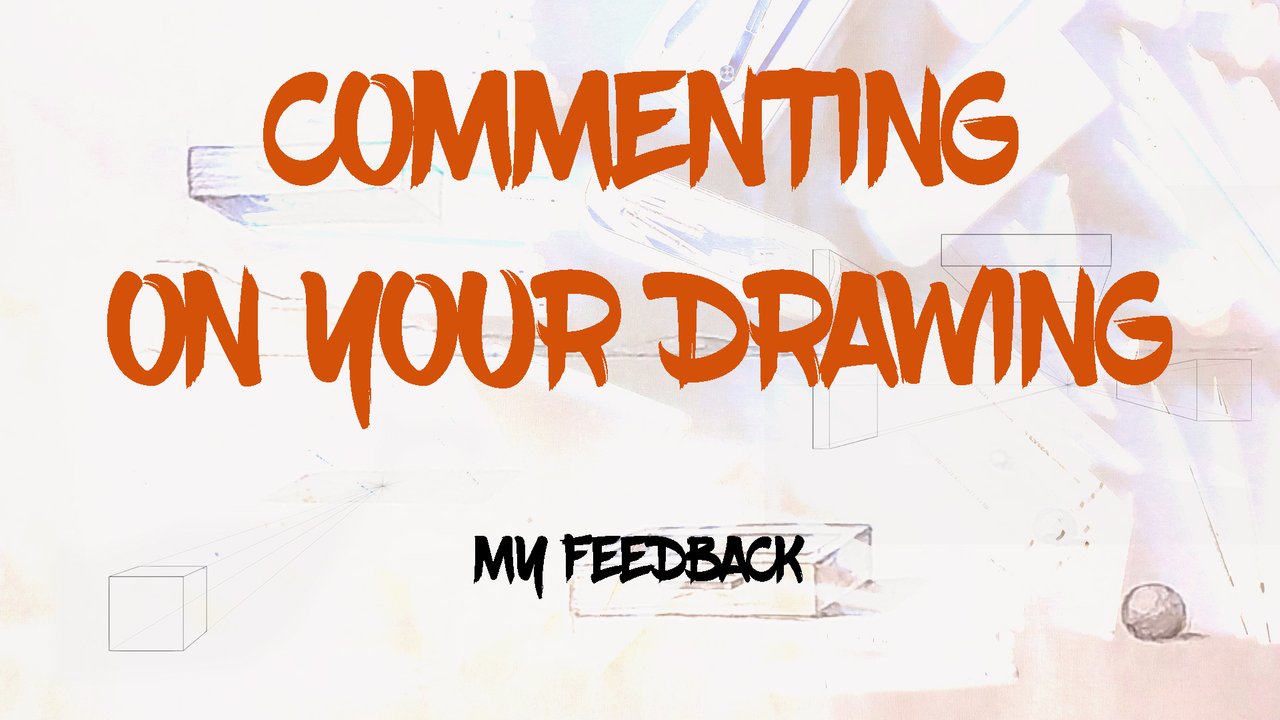
Hi friends!
I have been sharing with you some of these, which help you to make the practice of this craft easier. I'm convinced that in the process of applying these methods and rules you also learn to develop a fundamental skill for every artist: the ability to observe.
If you already have enough practice, you may not need to take as many measurements or draw as many helplines as at the beginning to achieve a good result in your drawing and you'll surely notice that drawing is easier now than before and it is also easier to notice a mistake. Well, that is because you have developed your ability to observe.
Whenever I can, I draw by direct observation. I draw my hand, a glass, a plant, a pencil, or whatever is close to my sight and I never cease to be amazed by the capacity of observation the human being has because the more we observe the more we discover things that we have not seen before.
This is the most powerful "tool" you will get with these drawing processes that I am showing you. I hope that every day you try to strengthen this ability, an ability that we all have.
I'm very happy to see that @stef1 has not lowered her arms and she continues to exercise in drawing.
I have reviewed all your drawings, I am very happy to say that I have not found anything wrong with them.

This is her post: @stef1/drawing-like-a-pro-65-the-triangle-as-base-tutorial-by-jorgevandeperre
I don't see anything wrong with the shadow you've cast from this object. I came to the same solution.
The most important thing is that you have captured the method to define the shadows in this particular case. So we can move on to other situations (remember this is for the particular case when the light falls perpendicular - (90°) - to the observer).

Having seen your drawing of a cube and the ellipses they are both well done in my opinion.
Regarding the doughnut, you already know the basis for it. If you are not satisfied with the result, I suggest you buy a doughnut to draw it.

I wonder why you show this drawing again. I would expect you to show the drawing with the correction.

See: @jorgevandeperre/drawing-like-a-pro-81-commenting-on-your-drawing-drawing-a-pyramid
I understand that we can show a drawing with some mistake because we have not seen it, but if you are already aware of this, you must repair that error before showing your drawing again.
Furthermore, how can we learn from our mistakes if we don't do what is necessary to repair them?
"Drawing like a pro" means paying attention to these details.
I wish you a very nice day and good exercise!
@fumansiu/color-and-light-orange-round-3
is his newest lesson.
Very interesting indeed!
Well, our friend @arcoiris is back with his magnificent watercolour lessons.
Check out this last post that contains very interesting and useful advice about watercolours in different qualities and formats from different brands.
Here are the links to the previous related posts.
1 - 2 - 3 - 4 -
5 - 6 - 7 - 8 - 9 - 10 -
11 - 12 - 13 14 - 15 -
16 - 17 - 18 - 19 - 20 - 21 - 22 - 23 - 24 - 25 -
26 - 27 - 28 - 29 - 30 - 31 - 32 - 33 - 34 - 35 - 36 - 37 - 38 - 39 -
40 - 41 - 42 - 43 - 44 - 45 - 46 - 47 - 48 - 49 - 50 - 51-feedback - 52-Masterclass - 53-Homework Contest #6 - 54-Lesson - 55-Lesson - 56-Lesson - 57-Lesson - 58-feedback - 59-feddback - 60 Masterclass - 61-HW Contest #7 - 62-Lesson - 63-Lesson - 64-Lesson - 65-Lesson - Lesson-66 - 67-feedback - 68-feedback - 69-feedback - 70-Masterclass - 71-Homework Contest #8 - 72-Lesson - 73-Lesson - 74-Lesson - 75-Lesson - 76-Masterclass - 77-Homework - 78-Lesson - 79- Lesson - 80-lesson - 81-feedback - 82-lesson - 83-Masterclass - 84-HW contest - 85-feedback - 86-lesson - 87-lesson - 88-lesson - 89-feedback
Also, thanks to @xpilar for making these initiatives possible with their great support.
